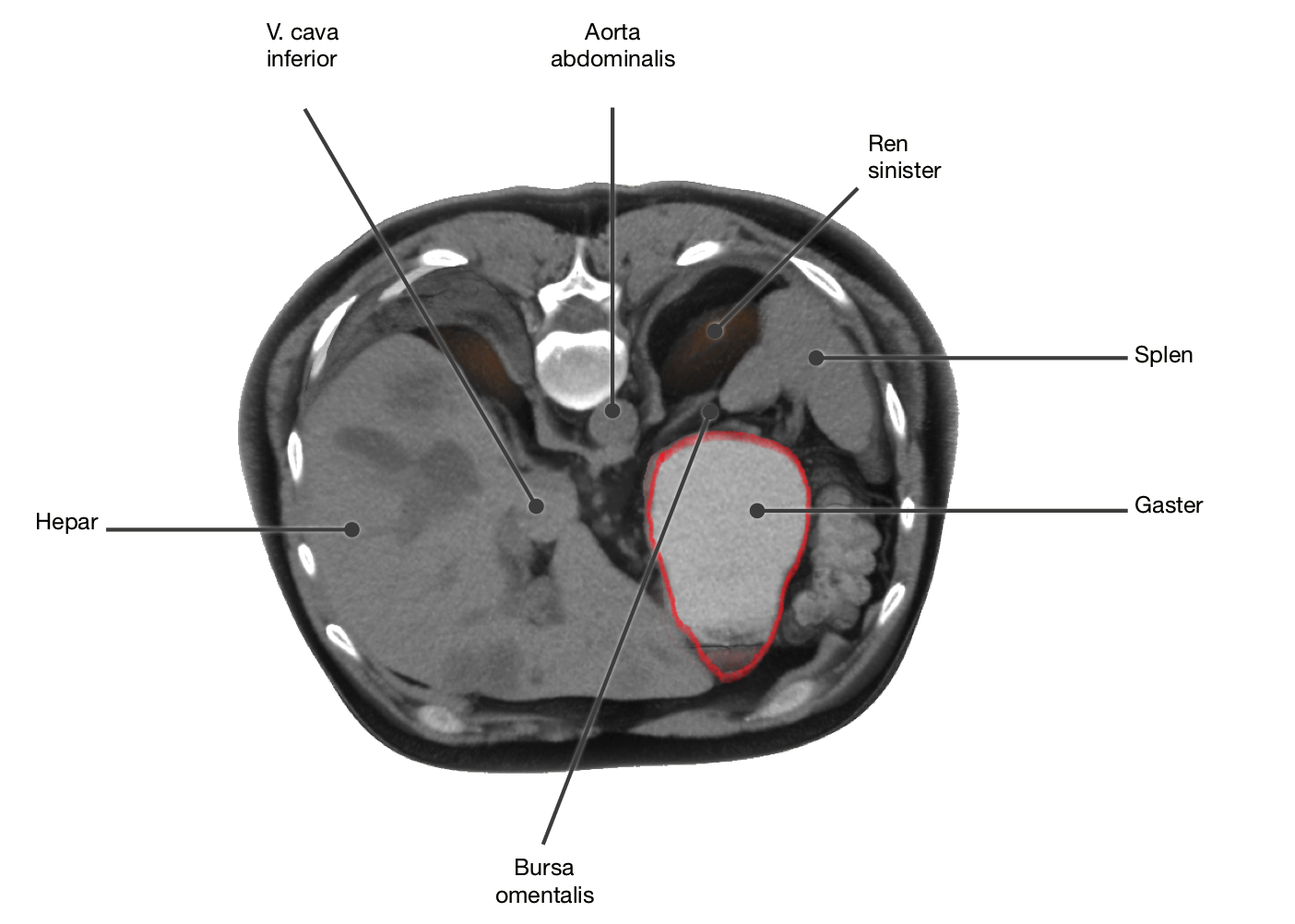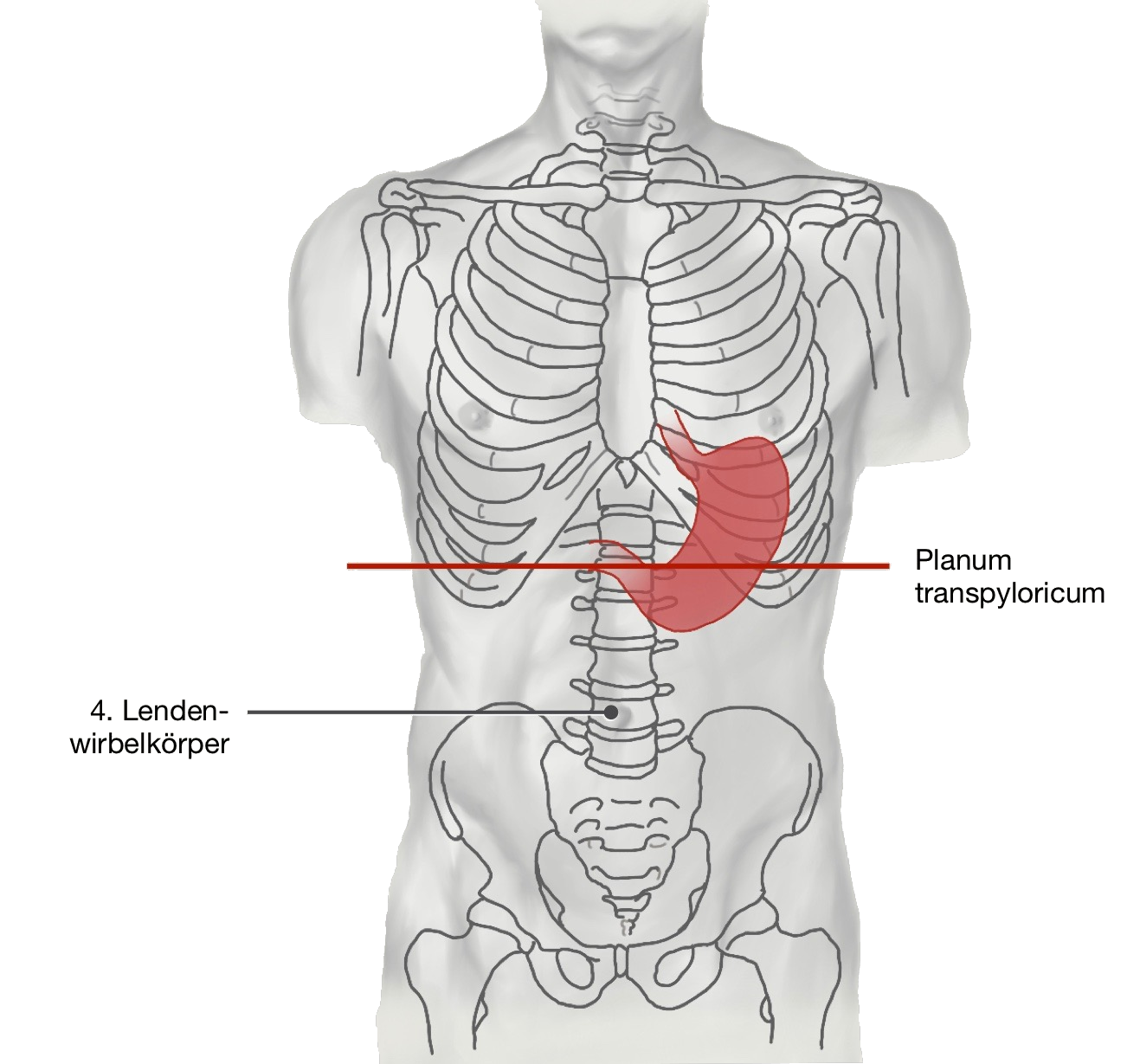Stomach (gaster)
The stomach (lat. gaster) is a hollow-spaced digestive organ. In the stomach, gastric juice and digestive pulp are mixed together and uniformly tempered.
Anatomy
The largest part of the stomach is formed by the gastric body (corpus gastricum). The stomach ends at the top with the fundus gastricus, which is highest in the standing patient and where the inhaled air is located (visible as a stomach bladder in the lower CT image). The fundus is at about the same level as the horizontal boundary of the liver. The esophagus ends in the pars cardiaca, which is located in the upper part of the stomach. On the outside, the stomach is covered with serous peritoneal, while the esophagus is surrounded by adventitious connective tissue.
After the corpus follows the antrum pyloricum. The transition of the porter's channel into the small intestine is formed by the m. sphincter pylori. The m. sphincter pylori is caused by the particularly strong ring muscles of the stomach. This causes the visible constriction of the canalis pyloricus.
Position in horizontal section
The stomach lies within the peritoneum (intraperitoneal) and is located in the immediate vicinity of various organs. The curved organ contours on both sides of the stomach are called large (curvaturagastrica major) and small (curvaturagastrica minor) stomach curvatures. Ventrally, the left lobe of the liver towers above the stomach up to the left upper abdomen. The stomach is dorsally adjacent to the spleen. The stomach has two mesogastria as developmental rudiments, which develop further as omentum majus and minus as well as connecting lines between stomach and adjacent organs and include the net bag (bursa omentalis). The bursa omentalis is the slit-shaped displacement space of the peritoneal cavity, which lies dorsally from the stomach. The back wall of the bursa omentalis is formed by the pancreas. For gastric peristalsis, the peritoneal coating plays an important role, as it establishes mobility in relation to the neighbouring organs.
Projektion auf den Rumpf
Der Magenfundus/-Corpus wird auf dem Rumpf zwischen der 6. und der 10. Rippe projiziert, auf der Fläche zwischen Linea mediana anterior und Linea medioclavicularis. Einen wichtigen Orientierungspunkt bei klinischen Untersuchungen spielt der Weg zwischen Symphysenoberkante und Oberand des Manubrium sterni. In diesem Bereich befindet sich der Pförtner (Pylorus). Er ist gegenüber der restlichen Magenabschnitte ziemlich unbeweglich, da er mit dem im Retroperitoneum gelegenen Duodenum verbunden ist.
Beziehung zu Nachbarorganen
Aufgrund der Lage des Magens innerhalb des Bauchfells, ist er sehr beweglich gegenüber benachbarten Organen. Dies kann unter Umständen dazu führen, dass Krankheitsprozesse (Magengeschwüre, bösartige Tumore) welche die Magenwand durchdringen, auf enganliegende, benachbarte Organe übergreifen.
Magen in situ
Stomach in situ (here) from the anterior view of the abdomen with elevated liver and removed Omentum minus or major. In the left upper abdomen the close contact between the large gastric curvature and the spleen (Splen) becomes visible.

